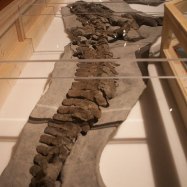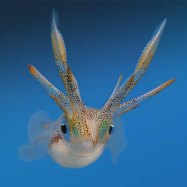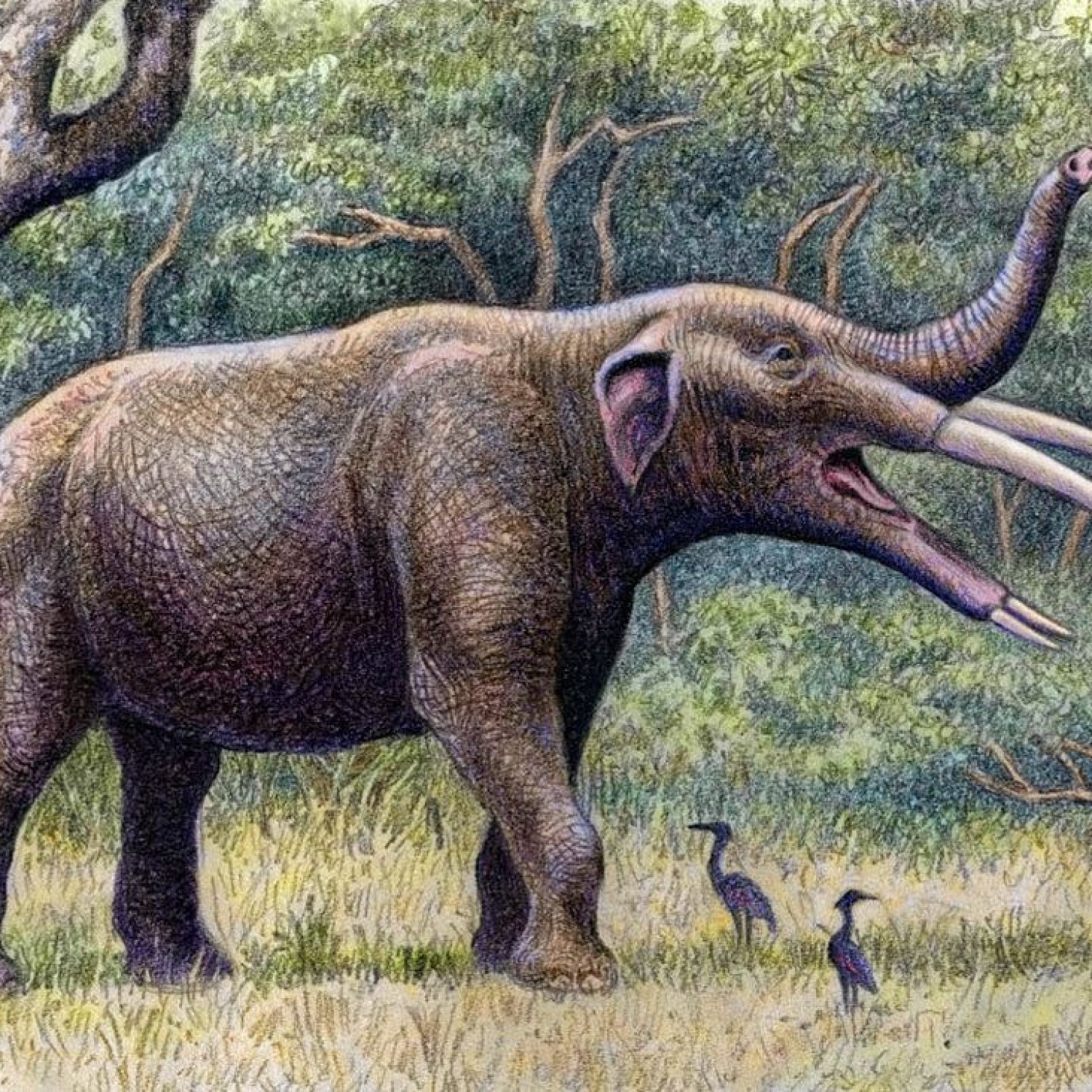
Gomphotherium
Unknown
Did you know, the Gomphotherium is an extinct mammal that belonged to the family Gomphotheriidae? These creatures roamed the earth millions of years ago and had a body shape similar to modern elephants. Fossil remains of this magnificent animal have been discovered in various locations, but their exact length still remains unknown. #Gomphotherium #ExtinctAnimals
Animal Details Summary:
Common Name: Gomphotherium
Kingdom: Animalia
Habitat: Woodlands and grasslands
The Fascinating Gomphotherium: An Ancient Elephant Ancestor
As humans, we have always been fascinated by the creatures that roamed the Earth before us. From mighty dinosaurs to mysterious sea creatures, we are constantly searching for clues about our planet's past. In this search, we have come across many incredible animal species, some of which are no longer with us. One such species is the Gomphotherium, an ancient relative of modern-day elephants Gomphotherium. The Gomphotherium may have disappeared from the face of the Earth, but its legacy lives on through fossils and the knowledge we have gained from studying them.What is a Gomphotherium?
Scientifically known as Gomphotherium, this extinct mammal belonged to the order Proboscidea, which also includes modern-day elephants and their ancestors. They lived during the Miocene and Pliocene epochs, between 23 and 2.6 million years ago, and were found in various locations around the world, including Africa, Asia, Europe, and North America. The name Gomphotherium translates to "bolt beast" due to its large, bolt-like tusks.Appearance and Body Shape
While we may not know the exact length and coloration of Gomphotherium, scientists have been able to determine its body shape by studying fossil remains. Similar to modern elephants, Gomphotherium had a large and bulky body covered in coarse fur. They had long trunks and large, curved tusks that were used for defense and foraging. Gomphotherium also had four large, column-like legs that supported their weight, making them well-adapted for their habitat Gila Monster.Habitat and Geographical Distribution
Gomphotherium was a highly adaptable species, and their remains have been found in a variety of habitats, including woodlands and grasslands. They were able to thrive in various environments due to their herbivorous diet, which mainly consisted of plants, fruits, and leaves. Fossil evidence suggests that they were also able to swim, making them even more versatile in their habitat.Gomphotherium had a vast geographical distribution, with remains being found in Africa, Asia, Europe, and North America. Their ability to adapt and thrive in different environments allowed them to spread their range and survive for millions of years.
Fascinating Feeding Method
As mentioned before, Gomphotherium was a herbivorous species, meaning their main source of food was plants. But what is fascinating about their feeding method is that evidence suggests they had a unique way of foraging. Unlike modern elephants, Gomphotherium had flexible trunks that could reach up to 6 feet in length, making it easier for them to reach and eat leaves from tall trees and vegetation.A Glimpse into the Past through Fossil Remains
One of the most exciting aspects of studying Gomphotherium is the abundance of fossil remains found around the world. Thanks to these fossils, scientists have been able to gain valuable insights into the behavior, evolution, and extinction of this ancient species.The first Gomphotherium fossil was found in Germany in the 19th century, and since then, numerous remains have been discovered in various locations, including Argentina, France, India, and Kenya. These fossils have helped scientists understand the species' anatomy, biology, and habits, as well as its relation to other animals.
Extinction and Aftermath
While Gomphotherium was a highly adaptable and successful species for millions of years, it eventually went extinct around 2.5 million years ago. The exact cause of their extinction is still a subject of debate among scientists, but it is believed to have been a combination of climate change, competition with other herbivorous species, and human interference.Despite their disappearance, Gomphotherium played a significant role in the evolution of modern-day elephants. The study of their fossils has provided crucial information on the development of the elephant family, making Gomphotherium a vital piece of the puzzle in our understanding of the natural world.
In Conclusion
The Gomphotherium may have left our planet millions of years ago, but the information we have gathered from studying their remains has given us a glimpse into their world and helped us understand our own evolution. From their unique physical features and feeding habits to their widespread geographical distribution, Gomphotherium has left an indelible mark in our history.As we continue to explore and learn about the incredible creatures that once called this planet home, the Gomphotherium stands out as a reminder of the incredible diversity and adaptability of life on Earth. And though they may be gone, their legacy lives on in the rich fossil record that continues to amaze and educate us.

Gomphotherium
Animal Details Gomphotherium - Scientific Name: Gomphotherium
- Category: Animals G
- Scientific Name: Gomphotherium
- Common Name: Gomphotherium
- Kingdom: Animalia
- Phylum: Chordata
- Class: Mammalia
- Order: Proboscidea
- Family: Gomphotheriidae
- Habitat: Woodlands and grasslands
- Feeding Method: Herbivorous
- Geographical Distribution: Africa, Asia, Europe, and North America
- Country of Origin: Not applicable
- Location: Fossil remains found in various locations
- Animal Coloration: Unknown
- Body Shape: Similar to modern elephants
- Length: Unknown
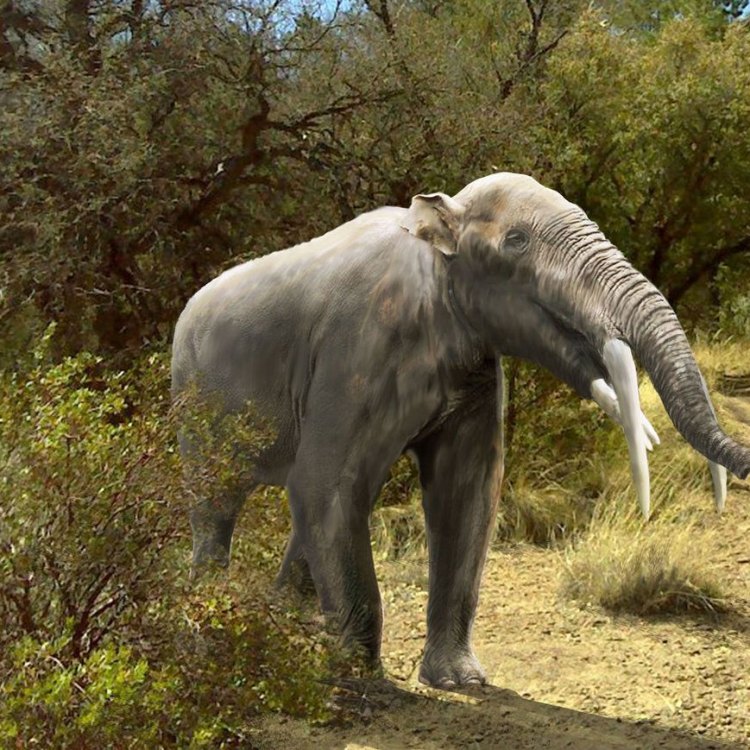
Gomphotherium
- Adult Size: Similar to modern elephants
- Average Lifespan: Unknown
- Reproduction: Unknown
- Reproductive Behavior: Unknown
- Sound or Call: Unknown
- Migration Pattern: Unknown
- Social Groups: Unknown
- Behavior: Unknown
- Threats: Extinction
- Conservation Status: Extinct
- Impact on Ecosystem: Unknown
- Human Use: Unknown
- Distinctive Features: Long, curved tusks
- Interesting Facts: Gomphotherium was an ancestor of modern elephants and resembled them in many ways.
- Predator: Unknown
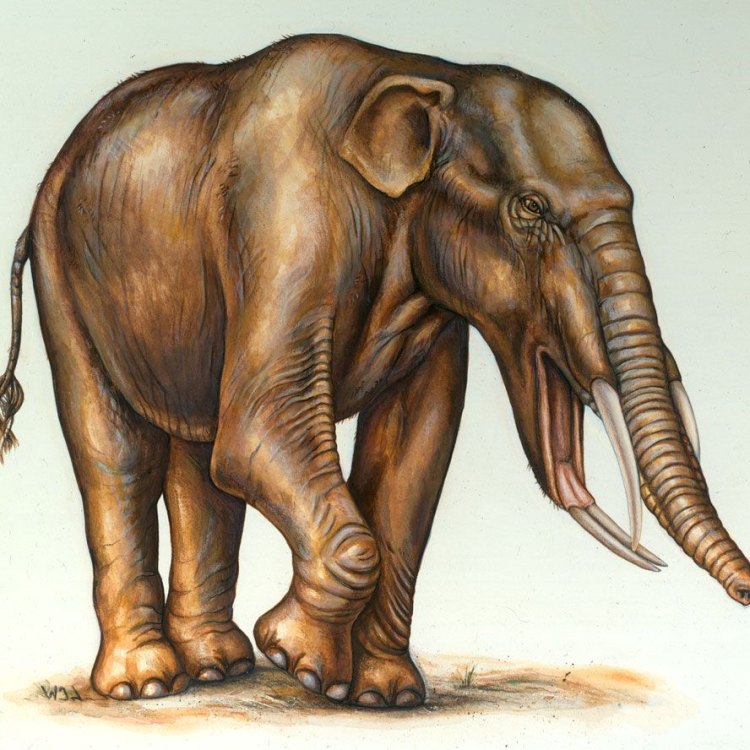
Gomphotherium
The Marvelous Gomphotherium: An Extinct Behemoth Similar to Modern Elephants
Millions of years ago, during the Miocene and Pliocene epochs, there roamed an impressive creature that shared many similarities with the majestic elephants we know today. With its sturdy body, long, curved tusks, and gentle demeanor, the Gomphotherium was a grand and imposing animal, yet little is known about its behavior and lifestyle. Let's uncover the fascinating facts about this ancient mammal and delve into its place in the ecosystem and its unfortunate extinction.The Gomphotherium was a herbivorous mammal that primarily lived in Eurasia, Africa, and North America PeaceOfAnimals.Com. Its name comes from the Greek words "gomphos," meaning "nail," and "therion," meaning "beast," referring to its distinctive tusks that resemble nails. This extinct animal belongs to the group of proboscideans, which also includes modern-day elephants, mammoths, and mastodons.
At first glance, Gomphotherium resembled a modern elephant, standing at around 11 feet tall and weighing up to 8 tons- about the size of an African elephant. However, there were some notable differences between the two species. Gomphotherium had four tusks instead of two, with a pair of long, curved tusks protruding from the lower jaw, and a shorter pair from the upper jaw. These tusks were used for digging, stripping bark from trees, and possibly for defense. They were also an essential feature for distinguishing between different species of Gomphotherium.
Despite its size and strength, the behavior and lifestyle of Gomphotherium remain largely unknown. There is ambiguity regarding its reproductive behavior, migration patterns, social groups, and even its lifespan Golden Oriole. It is believed that Gomphotherium was a social animal, living in herds with both males and females, similar to modern-day elephants. However, studies on its bones have also shown signs of solitary living, leaving its behavior a topic of much debate.
One thing that sets Gomphotherium aside from modern elephants is the fact that it is extinct. The exact cause of their extinction is unknown, but it is believed to be linked to climate change and competition for resources with other herbivorous mammals, such as horses, camels, and deer. The disappearance of Gomphotherium also coincides with the extinction of many other mega-mammals, known as the Great American Interchange, during the Pleistocene epoch.
The extinction of Gomphotherium is a tragic loss, not only for its species but also for the ecosystem. As a large herbivore, Gomphotherium played a crucial role in shaping the landscape and biodiversity of its environment. It maintained the balance of vegetation by grazing and browsing, preventing overgrowth and the dominance of certain plant species. Its disappearance may have had a negative impact on the ecosystem, leading to changes in vegetation and possibly even affecting other animals in the food chain.
Despite its extinction, the Gomphotherium is still a significant and fascinating creature to study. Its bones and fossils have been found all over the world, providing valuable insights into its anatomy, evolution, and behavior. Scientists and paleontologists continue to excavate and analyze these remains, eagerly trying to unravel the mysteries of this majestic beast.
Interestingly, Gomphotherium is believed to be the common ancestor of modern-day elephants and the extinct mammoths and mastodons. Its physical similarities and close evolutionary relationship with these animals make it a vital stepping stone in understanding their origins and evolution. In addition, studying Gomphotherium can also provide insights into the evolution of proboscideans as a whole and the various adaptations they have developed over time.
As for its interactions with other animals, little is known about the predator-prey relationships of Gomphotherium. There is no evidence of significant predators that may have hunted this massive mammal, leaving its natural enemies a mystery. However, it is possible that Gomphotherium may have been preyed upon by larger carnivores, such as the American Lion or the Smilodon, who coexisted with it during its time.
While there are still many unknowns about Gomphotherium, it continues to captivate and intrigue modern-day scientists and animal lovers alike. Its distinctive features, size, and evolutionary significance make it a fascinating creature to learn about. Its extinction serves as a cautionary tale of the fragility of our ecosystem and the impact humans have on the environment and its inhabitants.
In conclusion, the Gomphotherium may be extinct, but its legacy lives on through the dental evidence, fossils, and remains that tell the story of this remarkable animal. From its similarities to modern elephants to its role in shaping the ecosystem, the Gomphotherium offers a glimpse into the Earth's past and the importance of preserving our planet's biodiversity. So let us remember and honor this magnificent and extinct behemoth, the Gomphotherium.
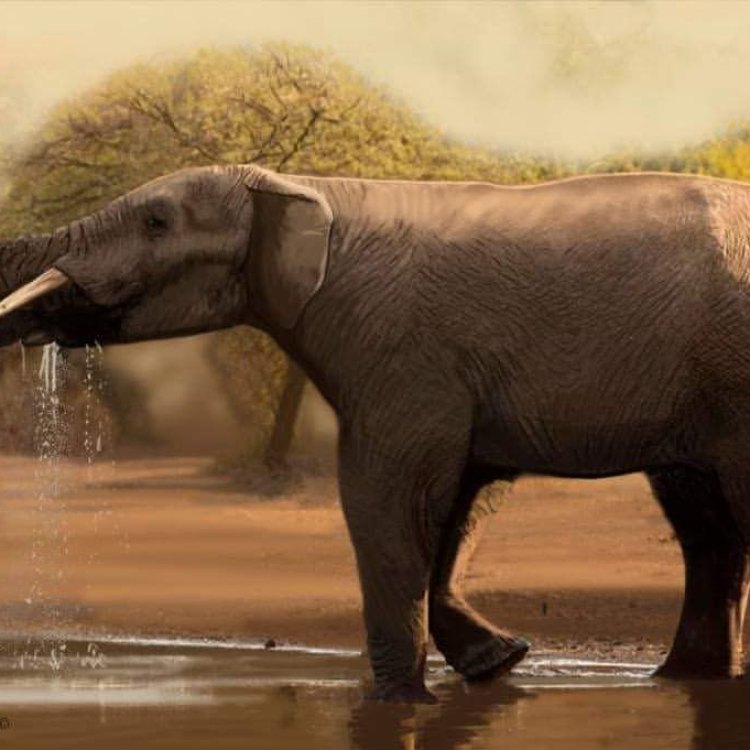
The Fascinating Gomphotherium: An Ancient Elephant Ancestor
Disclaimer: The content provided is for informational purposes only. We cannot guarantee the accuracy of the information on this page 100%. All information provided here may change without prior notice.

